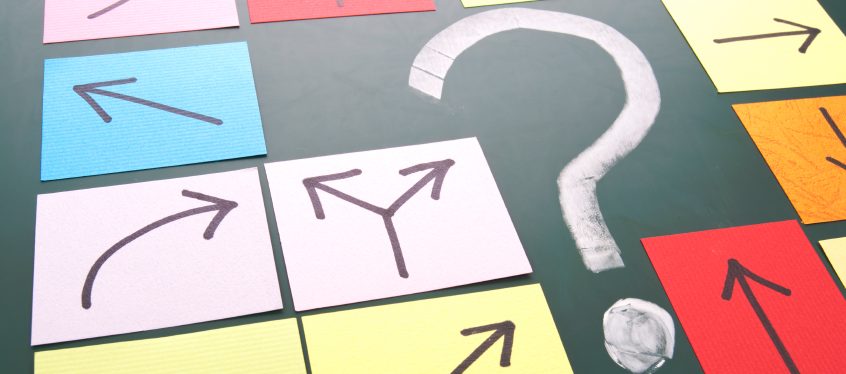Three previous blogs examined how innovation causes conflict and how individuals can make it constructive. This blog offers techniques for groups to make conflict constructive in the service of innovation.
Recall our definition of conflict: A situation in which two or more parties contend over something valued, with the intent of prevailing. The goal is to win, conquer, or otherwise prove superior.
Innovation is so genuinely collaborative that little good comes from conflict in this form. Conflict behaviors such as verbal dominance, strong expressions of emotion, pulling rank, withholding information, etc. aim to control the process and undermine the team. They destroy the benefits of collaboration required for innovation.
Converting damaging behaviors and energy into a constructive force is challenging. In the smoothest of group processes, any participant might intentionally or unintentionally display conflict behaviors that stem from a pressure to get their ideas on the table and acted on. In the bumpier group processes, one or more participants might deliberately engage in disruptive conflict behaviors.
To effectively surface differences for their value and respectfully channel conflict behaviors, follow these rules of engagement.
Make It All About The Process
Innovation is a process – a systematic series of actions directed toward a specified end. Control the process and you control the outcome, or at least influence it. Innovation is also a collaborative learning process. It’s an approach to group work in which parties with different understandings of a problem and different desires for a solution jointly define the issues, develop options, create decision making or success criteria, and craft a solution. Stakeholders are typically interdependent. Solutions emerge by dealing constructively with differences. Joint ownership of outcomes is required, and stakeholders assume collective responsibility for the future of the problem.
Process is where individuals come together as a team. To surface differences for their value and channel conflict behaviors, involve everyone in the process and keep the focus on a few basic principles that good process delivers: Identifying all the dimensions of a problem or solution; producing superior results by pooling what individuals know into a group knowledge that no one person, or subset, could have produced; and creating commitment to the outcome.
Actively Manage The Whole Process
Effective process occurs at four levels – the project, events within the project, techniques within events, and behaviors within techniques. The four levels feed inputs and outputs to each other.
Project refers to the organization of workflow at the broadest level of the innovation effort. When work is sequenced properly at this level, outputs from one phase become inputs to the next. This improves the odds that a group will move successfully from its stated purpose to its intended outcomes. Design at this level also includes time, budget, and human resource requirements.
Event refers to types of work sessions that make up the process such as plenary team meetings, workgroup meetings, fact-finding events, pilot activities, etc. Design requirements at this level require matching the purpose and intended outcomes of events upward to the project level, and downward to techniques.
Technique refers to structured activities a group conducts to achieve a particular outcome, or create a particular workgroup product, at the appropriate point in time. Group learning occurs here on the basis of individual learning in the next level down. Select techniques to meet objectives of the event (upward) and individuals’ learning requirements (downward).
Behavior refers to specific cognitive and communication acts in which individuals and groups engage to accomplish the technique and meet event and project requirements. Individual learning occurs here as techniques require people to unthink what they believe they knew, and rethink based on new information and views.
To surface differences for their value and channel conflict behaviors, actively manage the process at each level and foster learning over prevailing.
Vary Your Techniques
Most groups use some form of open discussion, like brainstorming, as the default conversation technique. This favors certain participants, however, such as those with strong verbal skills or special rank within the group. A participant who hopes to dominate using conflict behaviors easily controls or influences such conversations.
There are many group conversation techniques that are fair (apply equally to all participants), effective (produce a desired result) and efficient (produce the desired result, quickly). Nominal Group Technique is an excellent idea generation technique to substitute for brainstorming, for example. It allows each participant to think and write prior to speaking, and gives every participant equal airtime. It also generates far more ideas than brainstorming, which prevents groups from underconceptualizing a problem or solution.
IdeaWriting, the Delphi Method, Interaction Matrices, Options Fields, Trade-off Analysis, different modeling techniques, SWOT analysis, scenario planning, Appreciative Inquiry, Synectics, and many other techniques are available and easy to use. To surface differences for their value and channel conflict behaviors, apply techniques that let people think and write before talking; narrow and expand iteratively; analyze and re-integrate; and experiment to learn before deciding.
All group process contains the potential for conflict, and innovation causes conflict. To manage conflict constructively, follow rules of engagement that support learning and collaboration.
Lou Kerestesy is part of the GovLoop Featured Blogger program, where we feature blog posts by government voices from all across the country (and world!). To see more Featured Blogger posts, click here.





Leave a Reply
You must be logged in to post a comment.